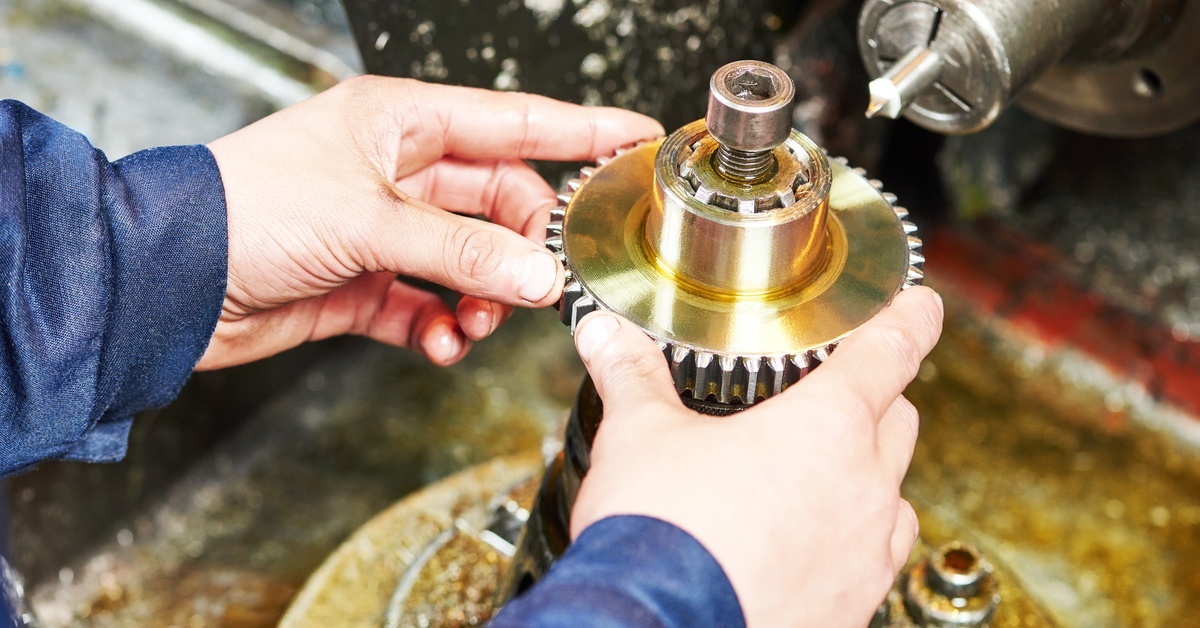Technical teams from industrial, military, and automotive sectors evaluate lubricant behavior with precision. These environments rely on fluids that support high pressure, shifting temperatures, and strict environmental standards.
When specialists start comparing synthetic and biodegradable oils, they focus on formulation behavior, load response, and system compatibility rather than trends or broad claims. Let’s take a quick look at these clear distinctions to help technicians match oil chemistry with operational targets.
Structural Composition and Formulation Behavior
Synthetic formulations follow engineered molecular layouts that deliver uniformity. Controlled chain length, saturation level, and additive selection create predictable responses under heat and load. This structure supports high-film strength and consistent viscosity during extended operation. These qualities drive reliability in aviation support equipment, machining centers, compressors, and high-speed gear drives.
Biodegradable formulations follow a different path. Natural or renewable feedstocks shape their molecular profile. These feedstocks undergo rapid breakdown under specific environmental triggers, such as microbial activity, hydrolytic exposure, or ultraviolet exposure. That characteristic proves valuable in environmentally sensitive areas, though it requires tighter monitoring of storage and system conditions.

Heat Management and Oxidation Control
Synthetic formulations manage heavy thermal loads. Their engineered structure slows oxidation, controls thickening during long-duty cycles, and limits varnish formation in precision components. When hydraulic systems, turbines, or high-speed rotating equipment exceed moderate temperature thresholds, synthetic molecules maintain consistency without rapid breakdown.
Biodegradable options function within narrower temperature windows. Extended heat exposure accelerates degradation, which requires careful planning for equipment near furnaces, high-output engines, or industrial lines with constant thermal cycling. Oxidation control varies across biodegradable chemistries, so technicians rely on sampling programs that track color shifts, acid number growth, and viscosity changes.
Mechanical Load Response
Machinery across military ground fleets, manufacturing facilities, and automotive shops pushes lubricants through intense shear cycles. Synthetic formulations deliver high shear stability, supporting boundary lubrication under heavy pressure. This stability protects gears, bearings, and hydraulic components during repetitive stress.
Biodegradable formulations handle mechanical load differently. Some deliver strong lubricity for moderate pressures, especially in open-environment equipment or areas near regulated zones. However, high-pressure shear conditions demand robust molecular resistance. Many biodegradable options cannot sustain those cycles without a rapid change in film thickness, so load curves and duty durations guide selection.
Additive Behavior and Contamination Control
Synthetic oil packages integrate antioxidant, anti-wear, corrosion-control, and friction-modifying additives that provide strong retention during long-term operation. Their stability limits sludge formation during contamination events or short-cycle operation. Automotive, industrial, and aerospace environments benefit from this consistency.
Biodegradable formulations utilize additive systems shaped around environmental restrictions. Some additives break down faster in the presence of moisture or microbial exposure, which requires strict filtration management and shorter sampling intervals. Technicians who handle heavy particulate loads, water exposure, or frequent cold starts evaluate additive retention before implementation.
Storage and Handling Requirements
Storage conditions shape fluid integrity long before equipment activation. Synthetic oil handles wide temperature swings, irregular warehouse conditions, and long container life. Its molecular stability limits moisture uptake and separation.
Biodegradable oil requires tighter control. Container rotation schedules, humidity monitoring, and controlled lighting protect fluid behavior. Moisture intrusion can prompt premature hydrolysis, so technicians monitor seals, drum integrity, and handling equipment. Storage plans for biodegradable formulations require discipline to avoid misalignment between intended performance and actual field results.
Performance Across Service Areas
Different service areas demand different lubrication behaviors, so technicians evaluate fluid response based on heat, load, equipment design, and environmental constraints. This comparison helps teams align oil chemistry with operational conditions while maintaining control over contamination, downtime, and component wear patterns. With that framework in place, each sector can apply synthetic or biodegradable formulations based on its mechanical and environmental requirements.
Government and Military Operations
Ground fleets, support vehicles, power units, and hydraulic systems across government and military operations demand predictable performance. Synthetic oil supports these platforms with thermal stability and load control. When deployment locations are near wetlands, protected waterways, or spill-regulated zones, decision-makers evaluate biodegradable options while monitoring thermal and pressure limits.
Industrial and Manufacturing Environments
Manufacturing lines generate steady loads that challenge lubricants throughout the day. High-speed machining centers, stamping presses, hydraulic systems, and conveyor drives rely on synthetic oil for viscosity stability across long production windows. Biodegradable options appear in secondary or auxiliary systems near water discharge zones, where environmental compliance governs operational decisions.
Automotive and Lube Shop Operations
Light-duty fleets, heavy trucks, and specialty vehicles rely on synthetic oil for thermal control and consistent lubrication under stop-and-go conditions. Lube shop technicians track oxidation rates and contamination patterns to set drain intervals accurately. Equipment operating near agricultural land, lakes, or environmentally sensitive project sites may require biodegradable alternatives, though load levels and heat patterns determine feasibility.
Practical Evaluation Factors
Operational demands vary across equipment categories, so technicians rely on focused criteria to guide precise lubricant selection. Heat exposure, load patterns, contamination levels, and storage conditions shape fluid performance every hour.
When teams use these factors as a structured checkpoint, they match oil chemistry with mechanical behavior rather than defaulting to broad assumptions. This approach supports consistent performance across fleets and facilities.
Temperature Window
Synthetic oil manages broad thermal ranges. Biodegradable formulations support narrower windows shaped by feedstock sensitivity.
Mechanical Stress
Synthetic structures deliver film stability under intense load. Biodegradable options handle moderate pressure patterns, with closer attention to shear data.
Environmental Considerations
Synthetic oil supports performance-focused operations. Biodegradable formulations align with spill-regulated sites and protected areas.
Storage Dynamics
Synthetic oil tolerates varied warehouse conditions. Biodegradable options need strict moisture and rotation control.
Application Fit
Synthetic oil works within complex, high-speed assemblies. Biodegradable options support operations near sensitive environments when temperature and load remain manageable.

Integrating Operational Demands With Lubricant Selection
Teams across various sectors rely on consistent lubrication behavior when planning service intervals, equipment commissioning, overhaul schedules, and daily operation. When technical staff emphasize precision, fluid selection becomes part of performance engineering rather than an afterthought. These evaluations shape downtime frequency, contamination control, temperature management, and component longevity.
Moreover, leaders who oversee mixed fleets or multi-facility operations gain clarity when they shift their focus to application-specific reasoning rather than broad category assumptions. This approach allows equipment teams to match oil structure with equipment stress patterns. During planning sessions, analysts often compare synthetic and biodegradable oils because these distinctions support coherent decision-making frameworks.
Planning Fluid Choices With Operational Control
Lubricant planning shapes equipment behavior across every service area. Synthetic formulations support demanding mechanical and thermal conditions, while biodegradable oil supports operations near sensitive terrain or spill-regulated zones. Each choice requires disciplined sampling, storage management, and alignment with the application.
For guidance or product coordination, contact us at Santie Oil Company for technical support and reliable supply.

